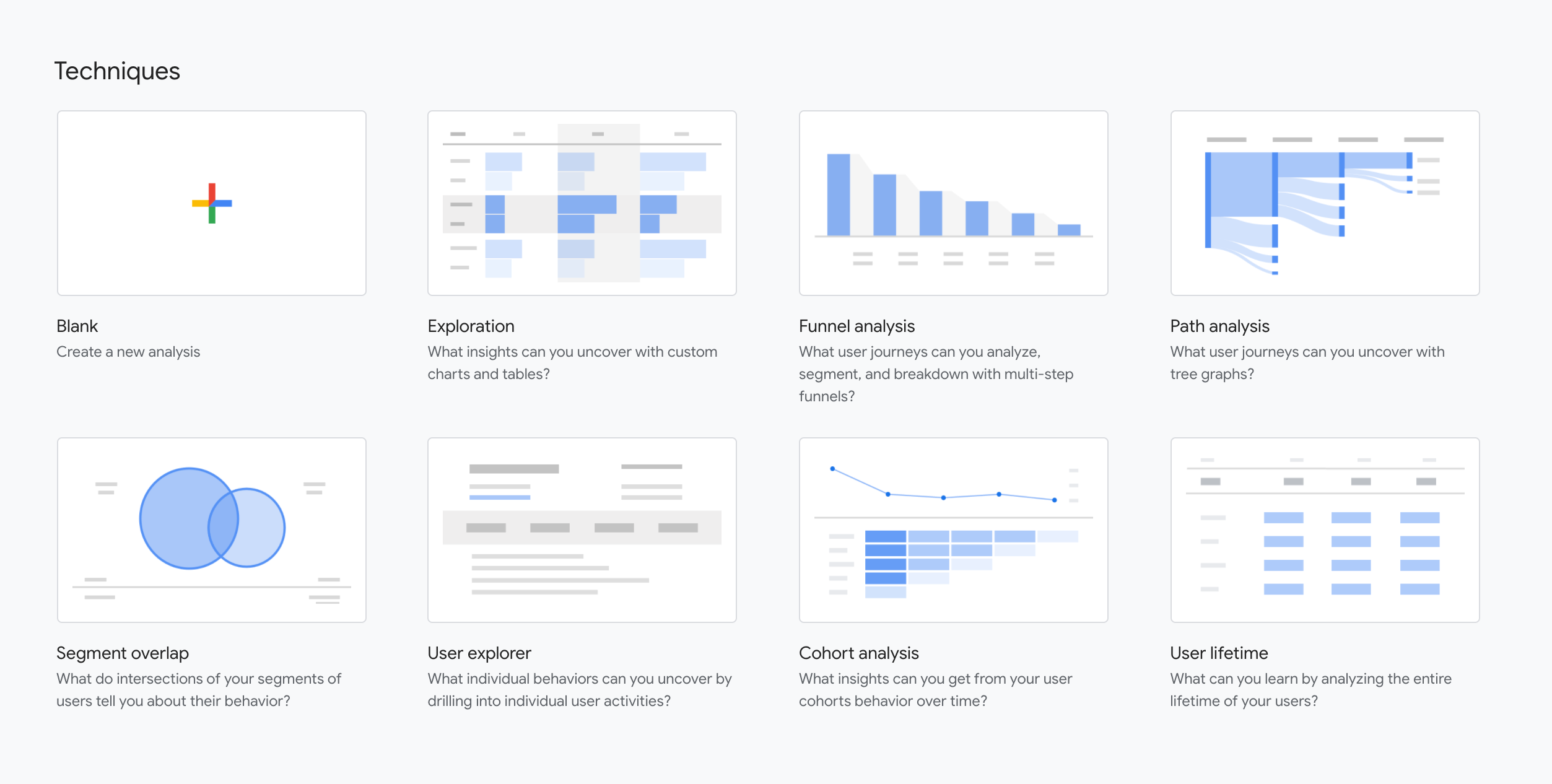
Use the right bid strategies in your Google Ads campaigns
When you hear “Google Ads bid strategies,” do you shudder?
With an auction-based system, it’s no wonder marketers struggle with Google Ads. Bidding strategies are complex, and with so many options, it’s tough to know what strategy to use at any given time.
Even automated bidding strategies can feel like a mystery. So how can you take the reins while still letting Google work its magic?
Book a 30 minute call
Reserve 30 minutes with a strategist and get 30 hours worth of value.
Below, we’ll cover how the bidding landscape has changed, what bidding options are available to you, and provide inspiration for new strategies you can use to maximize your budgets and time.
What are bid strategies, and why are they important?
Bid strategies are the way you’re telling Google to set your bids. There are typically two types of bid strategies: automated and manual.
Manual bid strategies are exactly what they sound like – you set them manually for each keyword. So for one keyword, you may be willing to spend $5 per click.
Automated bid strategies, on the other hand, are Google-directed. You tell Google the conversions you’re tracking and the results you want, and the algorithm tries to achieve them.
How has the bidding landscape changed over the past few years?
The biggest change has been the push to automation. When I first started in paid search, we were only using manual bids, setting bids at the keyword level. So relying on Google’s algorithms was a big transition.
Here are the three main changes I’ve seen as a result of that shift:
- Free time. Because Google is doing all the bidding work, folks can focus on other things like ad copy, conversion rates, and landing page copy.
- Different KPIs. The KPIs we use to measure success are significantly different today than just a few years ago.
For example, say you’re using manual CPC and then switch over the max conversions. Your average cost per click might spike, but the primary metric you should focus on is your CPL and conversion rate.
If your cost per conversion goes down and your conversion rate goes up, even with the average cost per click going up, that’s a net win. You’re driving more conversions at a more efficient rate.
- Focus on quality score. Your quality score affects your cost per click. So these days, you should always be looking to improve it – adjusting the landing page experience, adding more relevance, and improving the expected click-through rate.
One way to get a better conversion rate is to add qualifying questions to your forms. Instead of having all leads come through our pixel, we insert a qualifying question to inform the algorithm of what we see as a higher-quality lead. Our pixel won’t fire if the lead form isn’t filled out appropriately or doesn’t meet certain criteria.
7 bid strategy options
Before I dive into real-life examples of bidding in action, I want to share seven different strategies I run inside our accounts.
- Manual CPC – Most people know this one – you set bids at the keyword level based on historical performance. Manual CPC is something we use if we don’t meet data requirements to run a smart bidding strategy: 30 conversions or less over the last 30 days.
- Target impression share – I only use this when our competitors are bidding aggressively on our branded keywords, and we want to maintain authority. Use target impression share to guarantee that you’re showing up at the top of the research results page for a certain percentage of time.
- Max conversions – Max conversions is great for driving as many conversions as possible within a fixed budget.
- TCPA – To use TCPA, or target CPA, you need good conversion data and an almost unlimited budget. Use this one if you’ve got a sudden fluctuation of cash (like raising a round of funding) and want to scale efficiently. And if you need to cut costs, this one should be the first to go.
- Max conversion value – Max conversion value works best for our ecommerce accounts. We also use it to set values at the conversion action level or when passing back data to a client’s CRM.
- Performance max – Performance max is a newer, more automated campaign type that advertises on all channels. It’ll show on search display, YouTube, Gmail, and discovery. This is ideal for ecommerce clients.
- TROAS – TROAS, or target ROAS, is similar to max conversion values, so it’s good for ecommerce or data postback accounts. With this strategy, you’re telling Google you want X% return on your ad spend, and it tries to hit that goal.
When does automated bidding make sense?
You have to meet the data threshold of 30 conversions or more over the last 30 days – and the more data you have, the better.
Max conversions are great when you hit the bare minimum threshold and don’t have the budget to run target CPAs (TCPA). Keep in mind that it will take a few weeks to get out of the learning phase and produce results.
The next step would be TCPA, but for that, you need a heft daily budget. I suggest 10x your target CPA. So if your cost per conversion is $200, you should spend $2,000. That’s usually higher than most people are willing to spend.
So starting with max conversions is the most cost-efficient way to go.
The difference between max conversions and max conversion value
I use max conversion value over max conversions to increase the value of a specific conversion action.
Say I’m passing conversion values into Google Ads, or if I have them set at the conversion to action level. And I want to weigh form fills more than demo requests. Max conversion value will help me prioritize the form fill.
2 examples of successful bid strategies in the wild
Let’s take a deeper look at how these bidding strategies play out in practice.
1. TROAS to drive calls to or from a website
One client we had was tracking a bunch of conversions, and there was a clear winner: calls.
However, they didn’t want to ignore the other conversions they were getting, so we did what I call “funnel math.” We backed into the appropriate conversion values for each action. We then added those to conversion actions as values inside of Google and then switched over to TROAS.
The end result was a dramatic increase in calls, slight increases in other conversion actions, and a decreased overall account-wide CPL.
One takeaway from this example is how vital it is to get funnel math right. Mapping out individual stages of your funnel is an excellent way to ensure you’re moving the needle. Here’s a quick visual example.
Say you have 4,000 leads per month. But there are multiple stages those leads go through before close. You want to know how long, on average, those leads stay in MQL and SQL stages. And you want to know the conversion rates for each stage as well.
Use that baseline to determine which bid strategy makes the most sense for your particular sales cycle and budget.
2. TCPA as a portfolio bid strategy
Another of my clients had seven different campaigns running simultaneously, and they wanted to ensure they were hitting target costs per acquisition and conversion.
At the campaign level, they had a good amount of conversion volume. However, the client didn’t have the budget to run TCPA on each campaign.
We realized that by lumping the campaigns together, we could use all the data they already had and combine budgets.
With this shared budget strategy, we worked our way down from a $212 CPA to $159 while maintaining conversion volume. We could then spend in other areas of the account to grow overall conversion volume.
This was a winning strategy for our client, but that’s because the campaigns had similar search queries. The campaigns also spanned similar geographies and had similar business objectives as well. So if you’re going the shared route, keep these qualities in mind.
4 common bid strategy mistakes
I see four big mistakes when it comes to bidding strategies that you should avoid:
- Not applying the correct bid strategy to hit business objectives. I recommend using the customer journey and funnel math we showed earlier. From there, it’s pretty easy to see that you need “X” CPA to hit your desired cost per SQL or MQL.
- Not considering data and budget limitations. You need to hit that 30 over the last 30 days, or smart bidding won’t be useful. And for TCPA or TROAS, you want to aim for at least 60 conversions in 30 days. It may work on smaller campaigns for a short period, but you’ll see big swings in performance. You need enough data and budget for the campaign to optimize properly.
- Not setting realistic targets. In the TCPA example I shared earlier, we set the target 10% higher than what we actually wanted. That gave Google the freedom to spend a little bit more, and then we lowered that spend gradually over time to maintain conversion volume.
- Not running campaigns long enough. Most of these bid strategies will be in the learning period in the first two weeks, so I look at the four weeks following the first two weeks and then perform my analysis.
Get a headstart on your bidding strategy
Bidding is an art and a science – even when it’s automated. You need to think strategically to make the most of your budget, and you need to give the algorithm enough room to breathe to see results. Although it takes time to get your bidding strategy right, it can pay huge dividends in the long run.
Want some extra help defining your bidding strategy? Set up a call with one of WebMechanix’s paid search strategists, who can create the right blend of bidding strategies to meet your goals.
And if you want to learn more about digital marketing in general, sign up for our next Growth Clinic. We host informative webinars with experts on the WebMechanix team every Wednesday at noon ET. Catch up on past episodes on our YouTube channel.
Most newsletters suck...
So while we technically have to call this a daily newsletter so people know what it is, it's anything but.
You won't find any 'industry standards' or 'guru best practices' here - only the real stuff that actually moves the needle.






